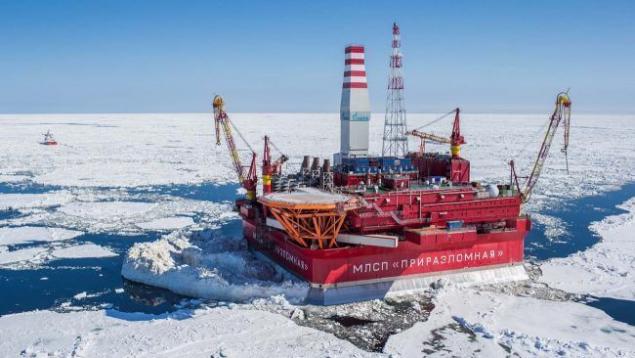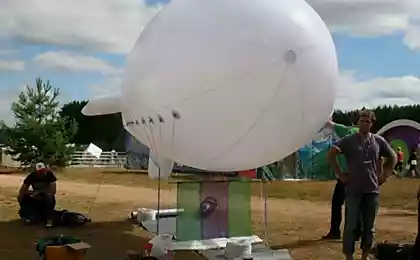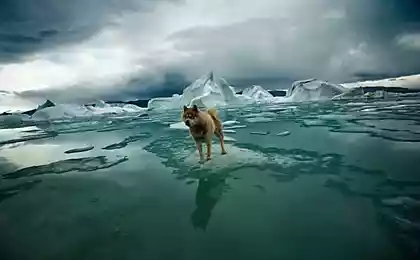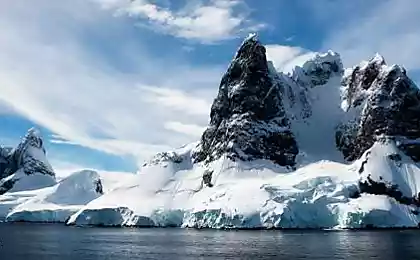503
The exploration station on a drifting ice floe in the Arctic will eat RES
Scientists from the Institute of petroleum Geology and Geophysics (ipgg) SB RAS is developing a project on creation of the Arctic is a unique geophysical station that will conduct oil exploration, drifting in the ice. Compared to other methods used today in the Arctic, this is cheap enough and environmentally friendly, said the chief researcher of laboratory for geoelectrics ipgg SB RAS Vladimir Mogilatov.
"This project came against a background of increasing demand for geophysical research in the Arctic. We appeal to the experience stations "North pole" (SP), first Soviet, and then Russian, which drifted in the Arctic ice, sometimes more than a year, sailing a distance of several thousand kilometers", — quotes the words Mogilatova the official publication of the Russian Academy of Sciences "Science in Siberia".

The scientist said that the station "North pole" conducted mainly meteorological observations and did not have geophysical instruments to study the Geology of the bottom. New research will allow to estimate the probability of being in the Arctic basin mineral resources, primarily oil. The vertical electric currents flowing through the ice and the ocean Sea water and ice to make useless most of the traditional geological methods. Scientists ipgg SB RAS proposed to use to study Arctic unconventional electromagnetic method: sensing the vertical currents. It is based on the use of special complex of the field source (circular electric dipole) and allows you to capture the response of a thin anomalous effects. This is one of the few methods that can operate in Arctic conditions; it is already tested in ground form, especially in the hydrocarbon deposits, showing high efficiency. To move the installation, the researchers plan to use the drifting ice. One day, occupying it with large-scale electrical and supply and, in part, reception configuration, scientists will have the opportunity over time to observe as the movement of the installation relative to the bottom of the ocean. It is assumed that the geological station will drift approximately the same route as the "North pole". It is not known whether the station to drift independently or together with its servicing staff. Plus the second option is that everything is under control and, in the case of a minor accident, people will be able to resolve small issues. On the other hand, all the measurements are quite possible to implement and without human intervention, besides such an approach will significantly reduce the cost of experiment. Fed by the sun and winds Separate issue arises the power supply drifting setup. In the framework of the project of Novosibirsk scientists want to use renewable energy sources: wind turbines (wind in the Arctic is always there) and possibly solar panels. The scheme of operation of the station in this case is as follows: week she works, and the other just drifting, accumulating energy. It was suggested to place the station a compact nuclear reactor, but it is refused: first, it is expensive, and secondly, there will be many questions from the point of view of ecology.
Today the project is under development, is a three-dimensional mathematical modeling of such a facility are discussed technological aspects, a set of necessary dimensions, possible interferences, such as natural electromagnetic fields. Scientists suggest that customer research could become a major oil company such as Rosneft or Gazprom. To implement such an ambitious project with its own forces Institute of not be able. P. S. And remember, only by changing their consumption — together we change the world! ©
Source: www.energy-fresh.ru/news/?id=13602
"This project came against a background of increasing demand for geophysical research in the Arctic. We appeal to the experience stations "North pole" (SP), first Soviet, and then Russian, which drifted in the Arctic ice, sometimes more than a year, sailing a distance of several thousand kilometers", — quotes the words Mogilatova the official publication of the Russian Academy of Sciences "Science in Siberia".

The scientist said that the station "North pole" conducted mainly meteorological observations and did not have geophysical instruments to study the Geology of the bottom. New research will allow to estimate the probability of being in the Arctic basin mineral resources, primarily oil. The vertical electric currents flowing through the ice and the ocean Sea water and ice to make useless most of the traditional geological methods. Scientists ipgg SB RAS proposed to use to study Arctic unconventional electromagnetic method: sensing the vertical currents. It is based on the use of special complex of the field source (circular electric dipole) and allows you to capture the response of a thin anomalous effects. This is one of the few methods that can operate in Arctic conditions; it is already tested in ground form, especially in the hydrocarbon deposits, showing high efficiency. To move the installation, the researchers plan to use the drifting ice. One day, occupying it with large-scale electrical and supply and, in part, reception configuration, scientists will have the opportunity over time to observe as the movement of the installation relative to the bottom of the ocean. It is assumed that the geological station will drift approximately the same route as the "North pole". It is not known whether the station to drift independently or together with its servicing staff. Plus the second option is that everything is under control and, in the case of a minor accident, people will be able to resolve small issues. On the other hand, all the measurements are quite possible to implement and without human intervention, besides such an approach will significantly reduce the cost of experiment. Fed by the sun and winds Separate issue arises the power supply drifting setup. In the framework of the project of Novosibirsk scientists want to use renewable energy sources: wind turbines (wind in the Arctic is always there) and possibly solar panels. The scheme of operation of the station in this case is as follows: week she works, and the other just drifting, accumulating energy. It was suggested to place the station a compact nuclear reactor, but it is refused: first, it is expensive, and secondly, there will be many questions from the point of view of ecology.
Today the project is under development, is a three-dimensional mathematical modeling of such a facility are discussed technological aspects, a set of necessary dimensions, possible interferences, such as natural electromagnetic fields. Scientists suggest that customer research could become a major oil company such as Rosneft or Gazprom. To implement such an ambitious project with its own forces Institute of not be able. P. S. And remember, only by changing their consumption — together we change the world! ©
Source: www.energy-fresh.ru/news/?id=13602























